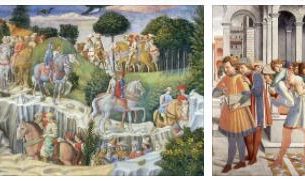Estonia is located in Northern Europe and is the northernmost country in the Baltic states. It borders Latvia to the south, Russia to the east, and the Baltic Sea to the north and west. In the south of the country is the highest point, the Suur Munamägi with 318 meters. The largest lake is Peipsi Järv. Upstream there are 1,520 islands, the largest of which is Saaremaa. Many areas of Estonia are still almost untouched, an unforgettable experience for holidaymakers who are looking for peace and relaxation.
The tourist center of Estonia is the state capital Tallinn. The historic old town with its numerous sights is one of the most impressive medieval witnesses in Europe. Examples of this are the Nikolai Church and the historic town hall with its lively forecourt and the guild houses.
Otherwise, Estonia is more tranquil. Cities such as Pärnu, Tartu or the small town of Otepää, which is primarily known to winter sports enthusiasts, now also enjoy international attention, but the lively capital and nature are the main attractions of Estonia.
Estonia is heavily overgrown with trees. This is rather untypical for the region. But today more than 44 percent of the total land area is covered with forest. Deer, roe deer and foxes can be found in the Estonian forests. There are also moose, many beavers, martens and mountain hares here. With a bit of luck, you can even spot reindeer in the wild. Those who are fearless can also lie in wait to watch brown bears.
About 2,000 lynx live in Estonia and share their territories with around 600 wolves. However, wolves, bears and lynxes are still allowed to hunt in Estonia. Animal rights activists are particularly critical of the hunt for lynx, as they pose no threat to sheep herds. But lynx hunting in particular is practiced as a “sport” in Estonia.
Estonia climate
Estonia is located in the northern part of the temperate zone and in the transition zone between maritime and continental climate. Since Estonia, like all of Northern Europe, is warmed by maritime air masses from the northern Atlantic, the climate here is relatively mild despite the northern latitude. The Baltic Sea causes climatic differences between the climate of the coastal region and the inland. Estonia has four seasons that are almost the same length.
Average temperatures in July, the warmest month, range from 16.3 ° C in the islands to 17.1 ° C inland and from -3.5 ° C on the islands to -7.6 ° C inland in February, the coldest month.
The average annual temperature in Estonia is 5.2 ° C.
The climate is influenced by the Atlantic Ocean, the North Atlantic Current, and the Icelandic Depression (an area known for the formation of cyclones and where the average air pressure is lower than in neighboring areas).
Estonia is located in a humid zone, the average rainfall is between 535 and 727 millimeters per year, most precipitation falls in late summer / autumn. There are 102 to 127 rainy days per year. Precipitation is particularly high in the western Sakala foothills and in the Haanja hill country. Between the middle of December and the end of March there is usually snow in Estonia, with the largest amount of snow in the southeastern part of the country.
Best travel time for Estonia
in summer between May and September. It should be noted, however, that the Baltic Sea in Estonia only gets around 16 ° C warm even in the warm season. Visit sunglasseswill for Estonia Travel Info.
Estonia – how to get there
Airplane: the national airline Estonian Air (OV) connects Tallinn with around 20 cities in Europe and Russia, and at reasonable prices. Air Baltic (BT) and Finnair (AY) also fly the airport Tallinn on. EasyJet connects Tallinn with Berlin and London.
Copterline offers several times a day helicopter flights between Helsinki and Tallinn – at the port of Linnahall.
Airports: the main airport in Estonia is Tallinn Airport.
Ship: around 25 ferries, hydrofoils and catamarans from various lines such as Tallink, Lindaline, Nordic Jet Line or Viking Line operate daily between Helsinki and Tallin. From Sweden there is a daily ferry service between Stockholm and Tallin, operated by Frihamnen. The tickets for this should be booked in advance.
Rail: GO Rail operates a daily night train between Moscow and Tallin. There is another train connection to St. Petersburg.
Automobile: From Finland you can take a car ferry from Helsinki to Tallinn.
Buses are sometimes the cheapest and definitely a comfortable way to travel to the Baltic States. Eurolines connects Tallinn with cities in Germany and Poland and from there with cities across Europe. There are direct connections from Tallinn to Riga and Vilnius several times a day. There are also daily buses from Tallinn to St. Petersburg and Kaliningrad.
Estonia – traveling in the country
Railway: the Estonian railroad is operated by the companies Eesti Raudtee and Edelaraudtee. However, the rail network is only expanded to a limited extent.
Car: in Estonia, drivers need an international driver’s license as well as a vehicle registration document and accident insurance. The most important highway is the E67, the so-called Via Baltica. It crosses the west of the country.
Buses are a great way to travel around Estonia. You drive more often and are faster than trains and its network of routes covers almost all areas of the country. The central bus station in Tallinn is located near the main train station.
Bicycles: Estonia is mostly very flat and, due to its small size, easy to travel by bike. Although Estonia is still far from the standard of other countries in terms of bicycle use, it is making efforts to develop signposted cycle paths. The Estonian cycle path network now covers around 4,000 kilometers.


